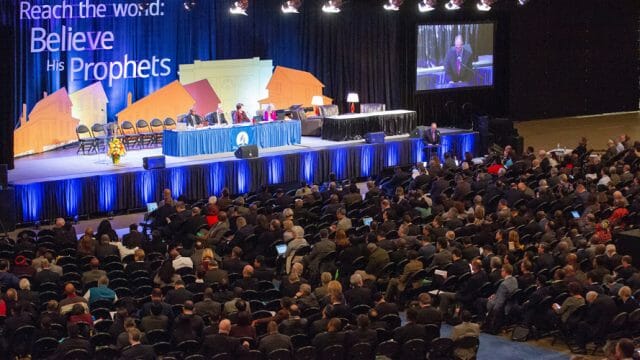Did all the Israelites come to the temple during the Sabbath to worship the Lord?

The short answer to your question is “no.” Perhaps the next question is: what then did the Israelites do for worship during the Sabbath? The question is difficult to answer, and this has led some to conclude that the Sabbath was only a day of rest. Here are some suggestions to consider.
1. A HOLY CONVOCATION
The Sabbath is called a day of “sacred assembly,” suggesting that people came together to worship during that day (Lev. 23:3, NIV). Some have suggested that the phrase should be translated a “sacred proclamation,” and that it was an announcement of the arrival of a festival. This cannot be applied to the seventh-day Sabbath, because it arrived every week. The text suggests that the Sabbath was a day people assembled for worship. This was to happen in all their “dwellings” (verse 3), which could designate their homes or the settlements in which people were dwelling. The implication of the passage is that during the Sabbath, people gathered to worship.
2. COMMUNAL WORSHIP
One could assume that people living in Jerusalem, and perhaps in adjacent cities, would come to the temple to worship and to be instructed by the priests. General communal worship occurred mainly during festivals, particularly during the pilgrimage festivals— the Feast of Unleavened Bread, Pentecost, and the Feast of Tabernacles (Deut. 16:16). These were moments of rejoicing before the Lord, when male Israelites came to the temple from all over the land to worship. If the feast included a seventh-day Sabbath, there would have been a communal day of rest and worship. The Israelite temple was God’s residence, and only the priests had access to it; consequently, worship occurred mainly in the courtyards of the temple.
3. FAMILY WORSHIP
It is probable that during the Sabbath Israel’s extended families would gather to pray and be instructed by the head of the family. This was one of Abraham’s responsibilities as the head of his family (Gen. 18:19). The Lord clearly instructed the Israelites to teach their children about His will for Israel. This was to be done as often as possible: “You shall teach them diligently to your children . . . when you sit in your house, when you walk by the way, when you lie down, and when you rise up” (Deut. 6:7; cf. 4:9; 11:19). Since the Sabbath was a day of rest for all family members, it would have lent itself to be an excellent occasion to teach children about the mighty acts of God on behalf of His people, and also about the covenant law.
4. LEVITICAL CITIES
God chose the tribe of Levi to be in charge of the sanctuary services. As their reward, God apportioned to them the tithe of the people. They did not possess any land, but instead the Lord assigned to them 48 cities, known as Levitical cities, located at strategic places throughout the land. Priests and Levites obviously dwelt in these cities. The religious purpose of these cities is not clearly stated in the Bible. They may have functioned as teaching centers. Priests and Levites were responsible to instruct people not only concerning how the Lord guided Israel in the past but also about the law of the Lord (Lev. 10:11; Deut. 33:10). This was extremely important, because every Israelite was responsible before the Lord to observe the law. I suggest as a possibility that during the Sabbath, Israelites came to these cities to worship and to be instructed by priests and Levites.








